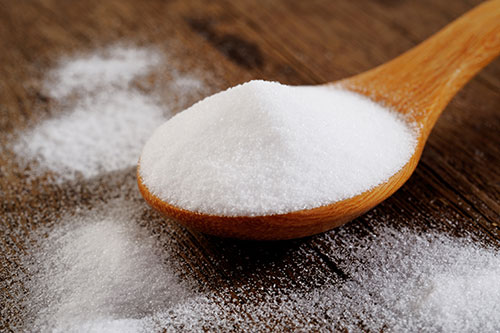When they first started working with baking, there were certainly a lot of people who confuse the concepts of ingredients and especially types such as baking powder, baking soda and yeast. So what is baking powder and what is the difference between baking soda and baking soda.
Floating flour, baking soda, and baking yeast are additives that are often used to prepare dishes or to make breads and cakes. However, not everyone understands the nature and can distinguish these types.
What is floating powder?

Floating powder also known as baking powder, also known as Baking Powder, was first discovered in 1843 by British food producer, Alfred Bird. Flotation powder is a dry mixture of Bicarbonate of Soda, a small amount of starch that works to keep other ingredients dry and acidic substances to produce Carbon Dioxide gas for yeast products during baking. Currently, most of the flotation powders used are double acting flotation powders. Meaning 1 type of acid reacts at room temperature when a liquid is added and another type of acid reacts when heated.
Over time, the floating dough will deteriorate and no longer look as good as it should be, so it should be kept in a sealed bag or box in a cool, dry place. If you want to check if baking soda is good or not, stir teaspoon of baking powder with about 50 ml of hot water. There are many views that, when baking, if you increase the amount of floating dough, it will increase the swelling of the cake. However, this is completely wrong, if too much floating powder is used, the finished product will be fluffy and not smooth, plus the smell is very unpleasant. And conversely, if you do not use enough baking powder, the cake will not be able to fully hatch and no porosity.
Distinguish between baking powder with baking soda and baking soda
Floating powder, baking soda, baking soda are 3 types that are often confusing for users. As the information above, you must have understood more about baking powder, so what's the difference between baking soda and baking soda compared to baking powder?
Yeast (Yeast)
Yeast, also known as Yeast, is an ingredient commonly used to make bread, dumplings and many cakes that need a fluffy texture. The use of yeast is to make the cake fluffy through the annealing process. The temperature of about 10 - 37 C is the ideal temperature of active yeast. When using yeast, you should be careful not to let the yeast come in direct contact with the salt, you can mix salt with flour, then add it to warm yeast and add it to the flour. There are three commonly used types of yeast:
- Fresh yeast: This yeast is usually very moist, packed into blocks. Fresh yeast makes cakes more delicious, but their shelf life is quite short and needs to be refrigerated.
- Dry yeast: Brown, coarse, large seeds. When added to the dough, the dry yeast must be activated first by adding the yeast to warm water.
Yeast Instant: Dry yeast with smooth seeds and no prior activation, can be mixed directly with the cake dough. Instant yeast will generate a lot of gas, so just use less of the dry yeast.
Baking Soda

Baking soda, also known as Baking Soda, is used in baking recipes to help make the cake more fluffy and in cooking, people use baking soda to make the stews faster. Baking soda also has many effects such as deodorant, bleaching, skin beauty ... In cake recipes that use baking soda, after mixing the dough, you should bake it as quickly as possible. Because if left for a long time, there will be no more air in the dough, which will cause the cake to bloom poorly or not.
Through this article, surely you have a clear understanding of floating dough and how to distinguish floating flour from baking soda and yeast, right? Hope this information will bring useful and interesting things for you in daily life and work.
Address: B1/13/2, Da Phuoc Commune, Binh Chanh District, Ho Chi Minh City
Hotline: 0949.409.623
Email: info@glofoco.com
Website: www.glofoco.com
